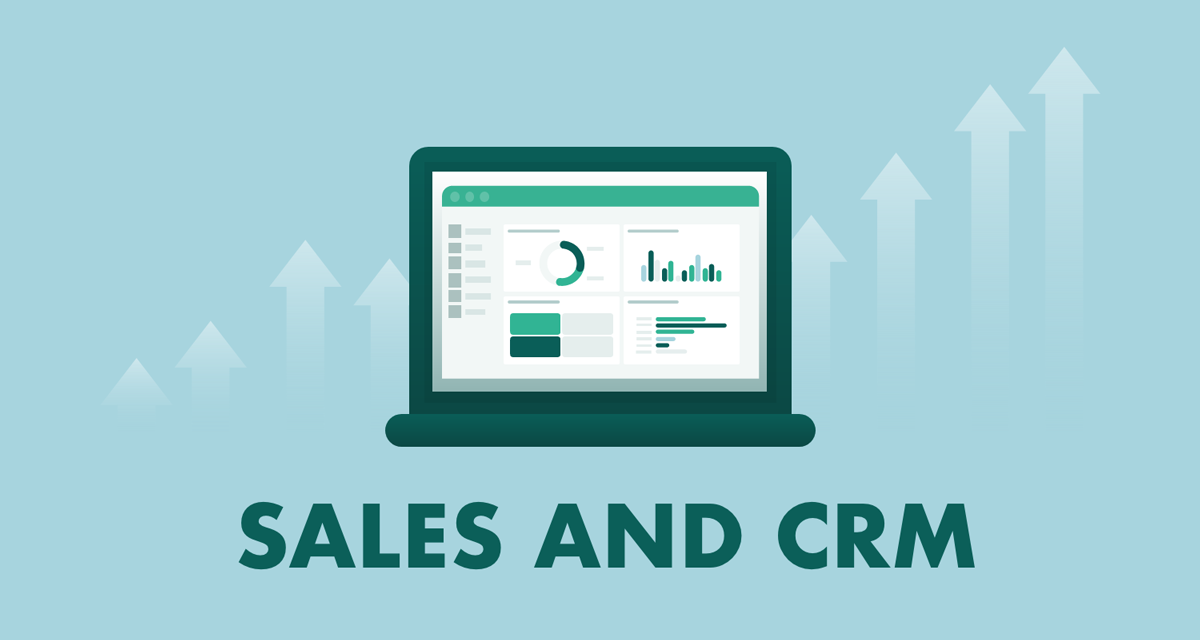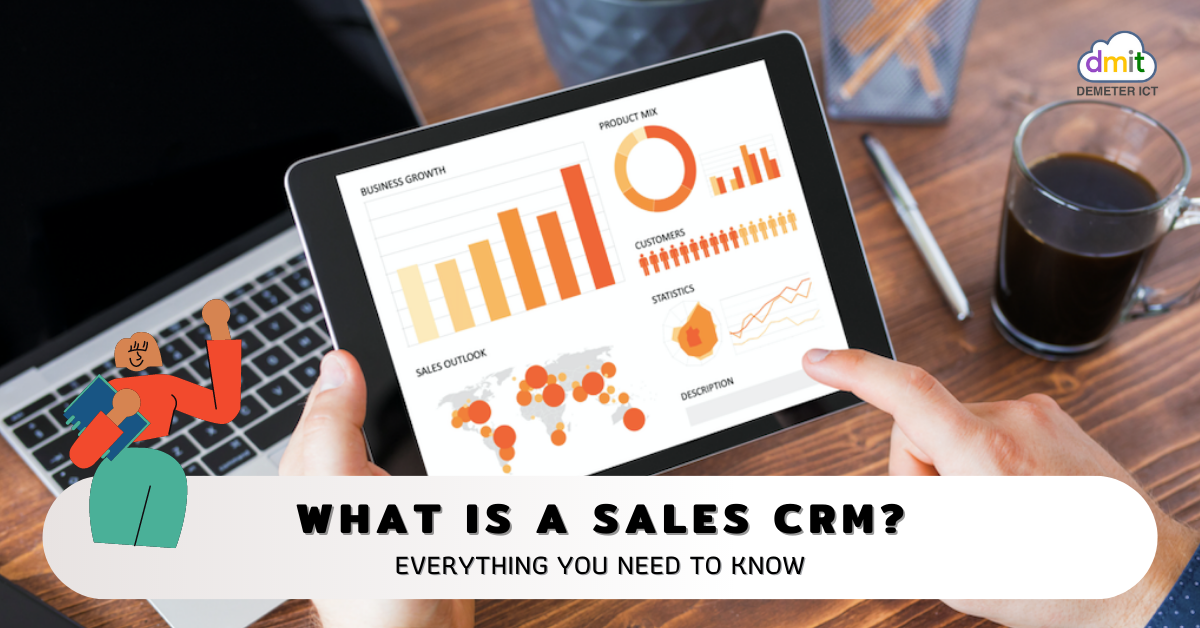Sales & CRM: A match made in business heaven. Together, they streamline processes, nurture relationships, and drive revenue. Embark on this journey as we delve into the world of sales and customer relationship management, unlocking the secrets to sales success.
In this comprehensive guide, we’ll explore the intricacies of sales processes, the power of CRM, and the art of integrating them seamlessly. From lead generation to closing deals, we’ll uncover how CRM empowers sales teams to achieve their goals and build lasting customer relationships.
Sales Process Optimization
The sales process is a complex and multifaceted one, involving multiple stages and touchpoints. Optimizing this process can significantly improve efficiency, increase revenue, and enhance customer satisfaction. A comprehensive overview of the sales process and its key stages, along with the benefits of CRM in each stage, is provided below:
Lead Generation, Sales & crm
Lead generation is the process of identifying and qualifying potential customers. CRM can assist in this stage by automating lead capture from various sources, such as websites, social media, and email campaigns. Additionally, CRM can help segment leads based on demographics, firmographics, and behavior, enabling targeted marketing efforts.
Lead Qualification
Lead qualification involves assessing the potential value and fit of leads. CRM can streamline this process by providing a centralized platform for lead scoring and qualification. By tracking lead interactions, such as website visits, email opens, and content downloads, CRM can help sales teams prioritize leads and focus on those most likely to convert into customers.
Needs Analysis
Needs analysis involves understanding the specific needs and pain points of potential customers. CRM can facilitate this process by providing a detailed view of customer interactions, preferences, and past purchases. This information enables sales teams to tailor their sales pitches and product recommendations to meet the specific requirements of each customer.
Proposal and Negotiation
The proposal and negotiation stage involves presenting a solution to the customer’s needs and negotiating the terms of the sale. CRM can assist in this stage by providing templates for proposals and contracts, as well as tracking the status of negotiations.
Additionally, CRM can provide insights into customer preferences and past agreements, enabling sales teams to make informed decisions and negotiate effectively.
Closing
The closing stage involves finalizing the sale and securing the customer’s commitment. CRM can help streamline this process by providing automated reminders, tracking customer commitments, and generating sales orders and invoices. Additionally, CRM can provide post-sale support and follow-up, ensuring customer satisfaction and building long-term relationships.
Customer Relationship Management (CRM): Sales & Crm

Customer Relationship Management (CRM) is a comprehensive strategy that helps businesses manage their interactions with customers and build long-term relationships. It involves managing all aspects of customer data, from lead generation to customer service, with the goal of improving customer satisfaction and loyalty.
CRM systems provide a centralized platform for storing and managing customer information, including contact details, purchase history, and communication records. This data can be used to create personalized marketing campaigns, track customer interactions, and identify opportunities for upselling and cross-selling.
Types of CRM Systems
There are three main types of CRM systems available:
- Cloud-based CRM:Cloud-based CRM systems are hosted on the vendor’s servers and accessed through the internet. They offer the advantage of being accessible from anywhere with an internet connection and typically require less upfront investment than on-premise systems.
- On-premise CRM:On-premise CRM systems are installed on the company’s own servers and offer more control over data security and customization. However, they require a significant upfront investment and ongoing maintenance costs.
- Open-source CRM:Open-source CRM systems are free and open-source software that can be customized to meet the specific needs of a business. However, they require technical expertise to install and maintain.
Features and Functionalities of CRM Systems
CRM systems offer a wide range of features and functionalities, including:
- Contact management
- Lead management
- Opportunity management
- Customer service
- Marketing automation
- Sales forecasting
- Reporting and analytics
The specific features and functionalities available in a CRM system will vary depending on the vendor and the specific needs of the business.
Sales and CRM Integration

Integrating sales and customer relationship management (CRM) systems offers significant benefits for businesses. It streamlines processes, improves data accuracy, and enhances customer experiences.Integrating these systems enables real-time access to customer data, providing sales teams with valuable insights into customer interactions, preferences, and purchase history.
This allows them to tailor their sales strategies and offer personalized experiences. Additionally, it eliminates data duplication and inconsistencies, ensuring the accuracy and reliability of customer information.
Challenges and Best Practices
Integrating sales and CRM systems can be challenging, but following best practices can mitigate these challenges:
Data compatibility
Ensure data formats and structures are compatible between the systems.
Process alignment
Align sales and CRM processes to avoid duplication and inefficiencies.
User adoption
Train users on the integrated system to ensure smooth adoption and minimize resistance.
Step-by-Step Integration
Integrating sales and CRM systems involves several steps:
Plan and define goals
Determine the objectives and scope of the integration.
Choose a CRM system
Select a CRM system that meets the specific needs of the business.
Integrate systems
Connect the sales and CRM systems using an integration tool or API.
Test and refine
Thoroughly test the integration and make necessary adjustments to ensure seamless functionality.
Monitor and maintain
Regularly monitor the integration to ensure it continues to meet business needs and make updates as required.
Data Management and Analytics

Data management and analytics play a crucial role in optimizing sales performance and enhancing customer relationships. By effectively managing and analyzing data, businesses can gain valuable insights that drive informed decision-making and improve overall business outcomes.
Various types of data can be collected and analyzed, including customer demographics, purchase history, website behavior, and social media interactions. This data provides a comprehensive understanding of customer needs, preferences, and behaviors.
Data Analytics for Sales Performance
Data analytics can help sales teams identify opportunities, prioritize prospects, and tailor their sales strategies. By analyzing historical sales data, businesses can identify trends, patterns, and key performance indicators (KPIs) that contribute to success. This information enables sales teams to focus on the most promising leads and develop targeted messaging that resonates with their needs.
Data Analytics for Customer Relationships
Data analytics also plays a vital role in building and maintaining strong customer relationships. By analyzing customer feedback, businesses can identify areas for improvement and develop strategies to enhance customer satisfaction. Additionally, data analytics can help identify customer churn risk and implement proactive measures to retain valuable customers.
Sales Forecasting and Pipeline Management
Sales forecasting is crucial for businesses to predict future revenue, plan resources, and make informed decisions. It involves estimating the amount of revenue that a sales team is likely to generate over a specific period. Accurate sales forecasting helps businesses allocate resources effectively, manage cash flow, and identify potential growth opportunities.
CRM systems play a vital role in sales forecasting by providing valuable data and insights. CRM systems track customer interactions, sales activities, and historical data, which can be used to create accurate forecasts. They can also automate forecasting processes, reducing the time and effort required to generate forecasts.
Tips and Best Practices for Managing Sales Pipelines Using CRM
Effective sales pipeline management is essential for optimizing sales processes and increasing conversion rates. Here are some tips and best practices for managing sales pipelines using CRM:
- Define clear sales stages:Establish well-defined sales stages that reflect the customer journey and align with your sales process.
- Qualify leads effectively:Use CRM to capture and qualify leads, ensuring that only qualified leads are moved through the pipeline.
- Track key metrics:Monitor key pipeline metrics such as conversion rates, average sales cycle length, and pipeline value to identify areas for improvement.
- Use automation:Leverage CRM automation features to streamline pipeline management tasks, such as lead assignment, task creation, and follow-up reminders.
- Collaborate and communicate:Encourage collaboration between sales and other teams to ensure that everyone has a clear understanding of the pipeline and customer status.
Customer Segmentation and Targeting
Customer segmentation is the process of dividing customers into distinct groups based on shared characteristics. This allows businesses to tailor their sales and marketing efforts to the specific needs of each segment. CRM systems can be used to collect and analyze customer data, which can then be used to create targeted marketing campaigns and improve customer service.
Types of Customer Segmentation Strategies
There are many different ways to segment customers, but some of the most common methods include:
- Demographic segmentation: Dividing customers based on factors such as age, gender, income, and education level.
- Geographic segmentation: Dividing customers based on their location.
- Psychographic segmentation: Dividing customers based on their personality traits, values, and lifestyle.
- Behavioral segmentation: Dividing customers based on their purchase history, browsing behavior, and other interactions with a business.
CRM for Customer Segmentation and Targeting
CRM systems can be used to collect and analyze customer data, which can then be used to create targeted marketing campaigns and improve customer service. For example, a business could use a CRM system to track customer purchases and identify customers who have purchased a certain product or service.
This information could then be used to create a targeted marketing campaign that promotes similar products or services to these customers.
Case Studies and Success Stories

Businesses that have successfully implemented sales and CRM solutions serve as valuable examples of how these technologies can transform operations and drive growth. By examining their challenges, strategies, and outcomes, we can gain insights into the practical benefits and impact of sales and CRM integration.
The following case studies highlight real-world examples of businesses that have leveraged sales and CRM solutions to overcome challenges, improve customer relationships, and achieve significant results.
Company A: Streamlined Sales Process and Increased Revenue
- Challenge:Manual and fragmented sales process, leading to inefficiencies and lost opportunities.
- Solution:Implemented a CRM system that automated tasks, centralized customer data, and provided visibility into the sales pipeline.
- Results:Reduced sales cycle time by 25%, increased conversion rates by 15%, and boosted revenue by 10% within a year.
Company B: Enhanced Customer Engagement and Loyalty
- Challenge:Lack of customer insights and personalized communication, resulting in low customer satisfaction and retention.
- Solution:Integrated a CRM system with marketing automation tools to track customer interactions, preferences, and behavior.
- Results:Increased customer engagement by 30%, improved customer satisfaction scores by 20%, and reduced customer churn rate by 15%.
Company C: Data-Driven Sales Forecasting and Pipeline Management
- Challenge:Inaccurate sales forecasts and lack of visibility into the sales pipeline, leading to missed targets and lost opportunities.
- Solution:Implemented a CRM system with advanced analytics capabilities to track sales performance, identify trends, and predict future sales outcomes.
- Results:Improved sales forecasting accuracy by 40%, increased pipeline visibility by 25%, and exceeded sales targets by 12% in the following quarter.
Closing Summary
As we conclude our exploration of sales & CRM, remember that the key to success lies in harnessing their combined power. By embracing the principles discussed in this guide, you’ll equip your sales team with the tools and strategies they need to soar to new heights.
Embrace the transformative potential of sales & CRM, and watch your business flourish.